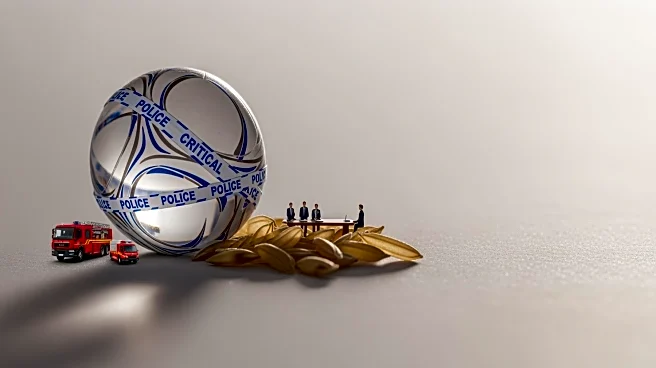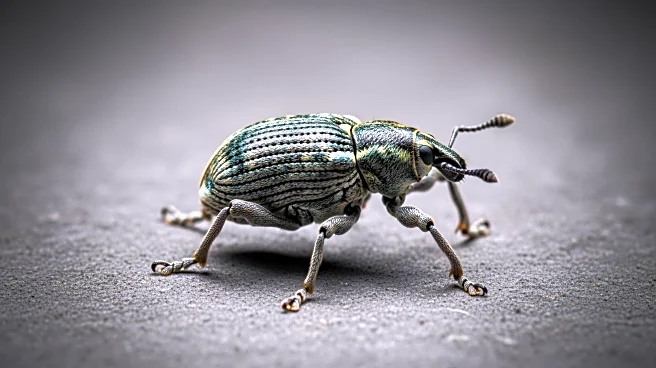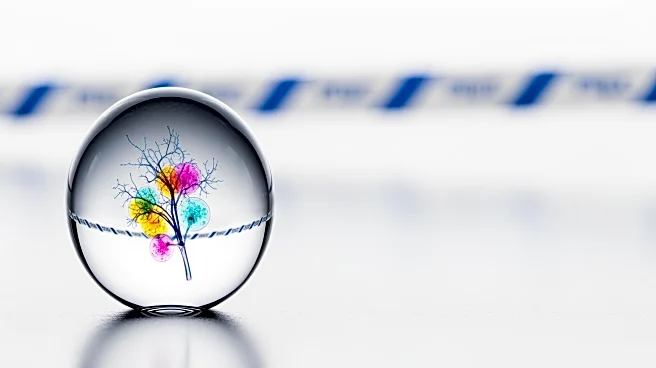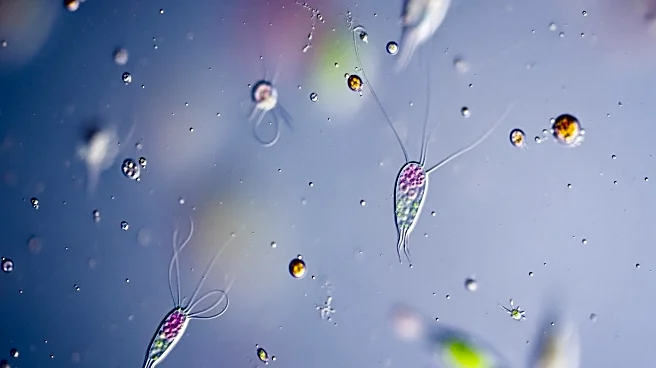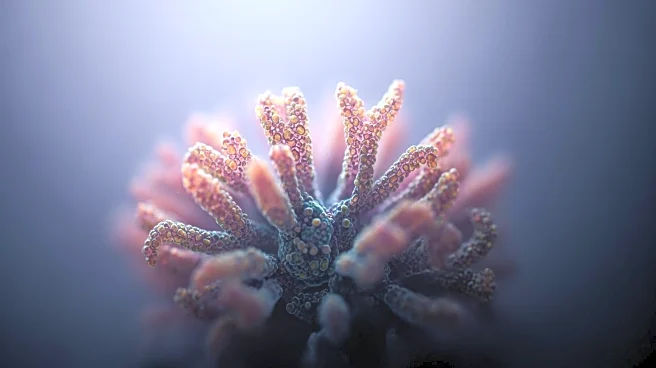What's Happening?
The Nikon Small World competition has awarded its top prize to an image of a rice weevil mounted on a single grain of rice, captured by Zhang You from China. This annual photomicrography contest, established
in 1974, showcases the intricate details of the microscopic world that are invisible to the naked eye. This year, the competition attracted approximately 1,925 entries from 77 countries, highlighting the global interest in scientific and artistic exploration through microscopy. The contest features a diverse range of subjects, including the eye of a potato, colonial algae spheres, and melting snowflakes, among others. The event continues to celebrate the intersection of science and art, providing a platform for scientists and artists to display their work.
Why It's Important?
The Nikon Small World competition plays a significant role in promoting scientific literacy and appreciation for the microscopic world. By highlighting the beauty and complexity of subjects that are typically unseen, the contest fosters a deeper understanding of biological and environmental processes. It also encourages innovation and creativity among scientists and artists, driving advancements in microscopy techniques and visual storytelling. The competition's global reach underscores the universal appeal of scientific exploration, potentially inspiring future generations to pursue careers in science and art. Additionally, the contest serves as a reminder of the interconnectedness of all living organisms, emphasizing the importance of biodiversity and conservation efforts.
What's Next?
As the Nikon Small World competition continues to grow, it is likely to attract even more participants and entries in future editions. The increasing interest in photomicrography may lead to advancements in imaging technology, allowing for even more detailed and vivid representations of microscopic subjects. Scientists and artists may collaborate more frequently, exploring new ways to visualize and interpret the natural world. The competition could also inspire educational initiatives, integrating photomicrography into science curricula to engage students with hands-on learning experiences. Furthermore, the contest may influence public policy by raising awareness about environmental issues and the need for conservation efforts.
Beyond the Headlines
The Nikon Small World competition highlights the ethical considerations of scientific imaging, such as the responsible use of technology and the portrayal of living organisms. It also raises questions about the accessibility of scientific knowledge, as the contest provides a platform for sharing discoveries with a broader audience. The event may contribute to cultural shifts in how society perceives science and art, encouraging interdisciplinary collaboration and challenging traditional boundaries between these fields. Additionally, the competition's focus on microscopic subjects may lead to increased interest in nanotechnology and its potential applications in medicine, environmental science, and other industries.
